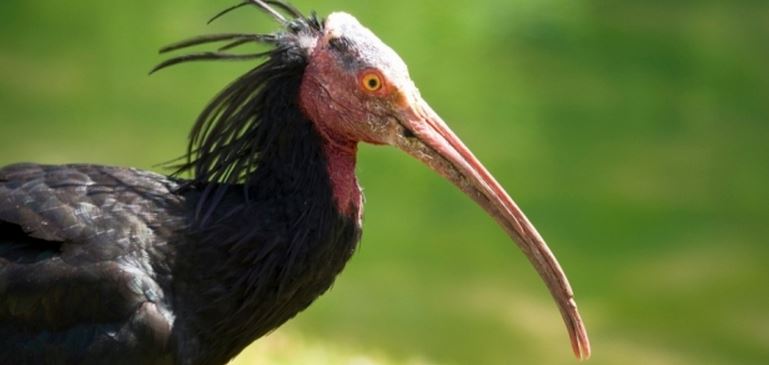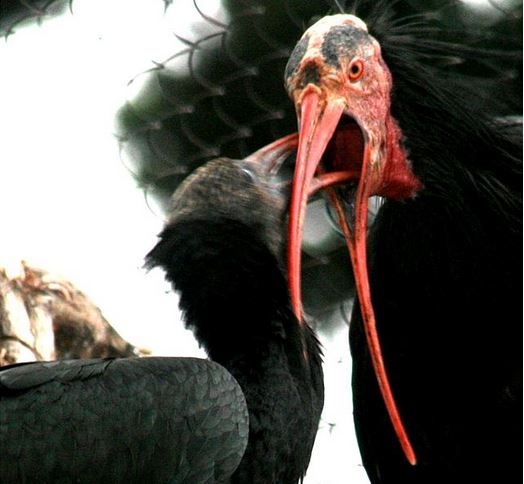The Northern Bald Ibis, a critically-endangered bird, faces its greatest-ever threat of extinction in Syria after the Islamic extremist terrorist group IS took the ancient city of Palmyra, ornithologists (bird experts) warn.
According to the BBC, a small breeding colony of Northern Bald Ibis was discovered near Palmyra in 2002.
Guards in charge of three birds held in captivity ran off during the fighting last week. Nobody knows what happened to the birds.
 According to Bird Life International, the Northern Bald Ibis is the rarest bird in the Middle East. (Image: birdlife.org)
According to Bird Life International, the Northern Bald Ibis is the rarest bird in the Middle East. (Image: birdlife.org)
A reward of US$1,000 for information on the whereabouts of a fourth bird has been offered by officials.
Female ibis must be found
The survival of the tiny colony depends on finding the missing female, ornithologists from The Society for the Protection of Nature in Lebanon told the BBC.
This female, called Zenobia, is the only one in the colony that knows the winter migration routes to Ethiopia. Without her presence the other birds cannot be released.
Experts say that if she dies, the Northern Bald Ibis will rapidly become extinct in the wild in Syria.
The BBC quoted Asaad Serhal, head of the Society, who said:
“Culture and nature they go hand in hand, and war stops, but nobody can bring back a species from extinction.”
The Northern Bald Ibis
The Northern Bald Ibis, also known as the hermit ibis or waldrapp (Geronticus eremita), is a migratory bird found in rocky or semi-desert habitats, typically close to running water.
 A Northern Bald Ibis feeding a chick. (Image: Wikimedia)
A Northern Bald Ibis feeding a chick. (Image: Wikimedia)
The glossy-black bird is between 28 and 31 inches (70 and 80 cm) long. Unlike other birds in the ibis family, it is non-wading. It has a long, curved red bill and a featherless, red head and face.
It breeds colonially on cliff ledges near the coast, where it generally lays two to three eggs in a stick nest. Its favourite prey include lizards, insects and other small animals.
Geronticus eremita was once widespread across northern Africa, the Middle East, and central and southern Europe.
It became extinct in Europe over three hundred years ago.
The Northern Bald Ibis is critically endangered. In southern Morocco there are believed to be about 500 wild birds remaining, and no more than 10 in Syria.
In an attempt to increase its numbers, reintroduction programmes have been instituted in Turkey, Spain, Austria and northern Morocco.
Experts are not sure why numbers have declined over the last few decades, but suspect loss of foraging habitat, hunting, and pesticide poisoning are major factors.
Video – Reintroducing the Northern Bald Ibis in Europe

